- Savage Blog
- Late Season Decoy Adjustments for Pressured Ducks and Geese
Late Season Decoy Adjustments for Pressured Ducks and Geese
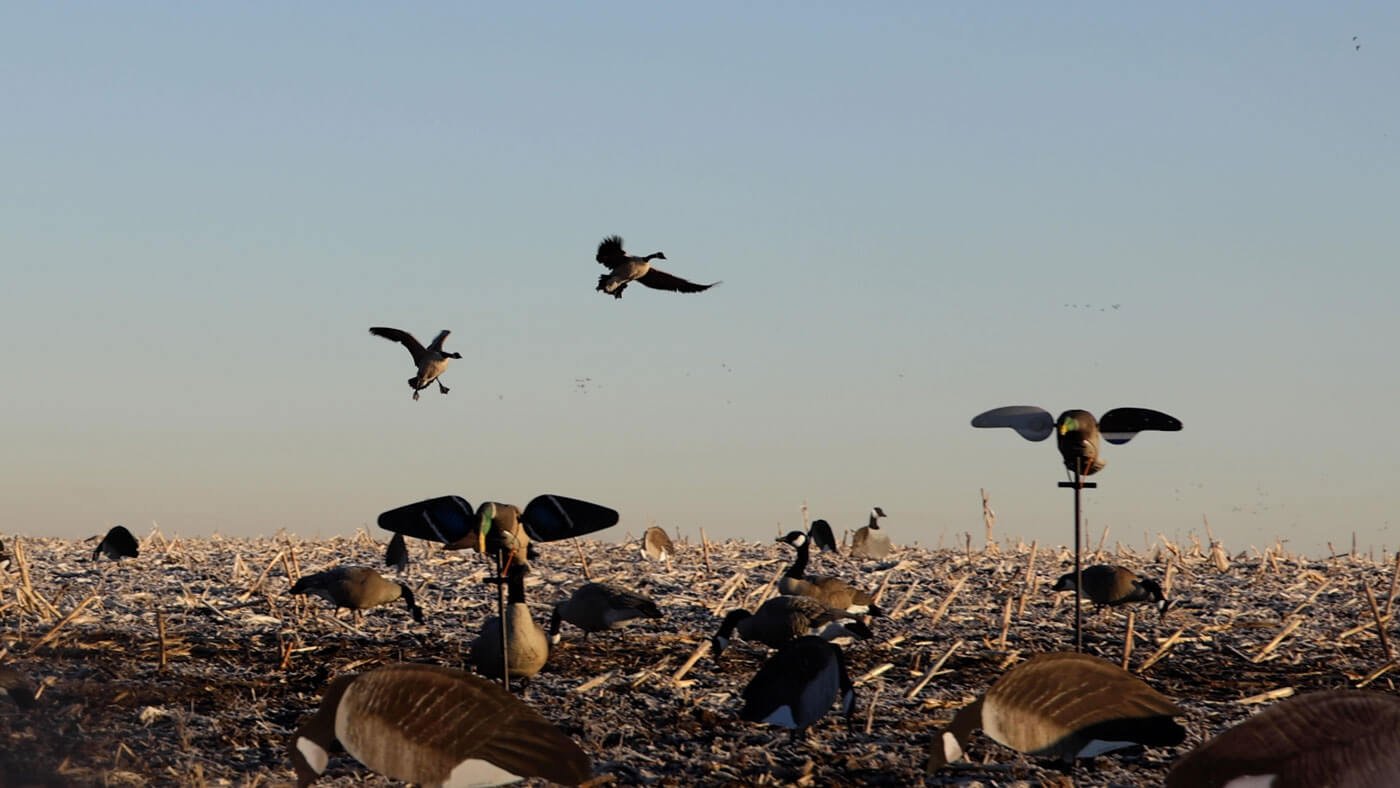
Pressured ducks and geese tend to fly higher, approach slower, and circle longer before deciding to land. A decoy spread that worked wonders in early or mid-season can actually repel these cautious birds in the late season. This is where some well-thought-out late season decoy adjustments can tip the scales in your favor.
1. Go Small with Your Spread
A standard decoy spread may involve a few dozen decoys to create the appearance of a full, lively area. But for late-season waterfowl, less can be more. Late season decoy adjustments often involve reducing your spread size to look more like a safe, comfortable spot.
By downsizing your spread, you can create the illusion of a less crowded, safer area. A smaller spread reduces the number of potential “red flags” that wary birds might pick up on, like unrealistic positioning or uniform spacing. Aim for around 8-12 decoys in realistic groupings that suggest relaxed, resting birds. These small spreads can look far more authentic to a suspicious flock that’s circling above.
Pro Tip: Use feeder decoys as the primary focus of your small spread. Feeding decoys can signal safety and calm, especially to birds looking for a place to rest after a long migration.
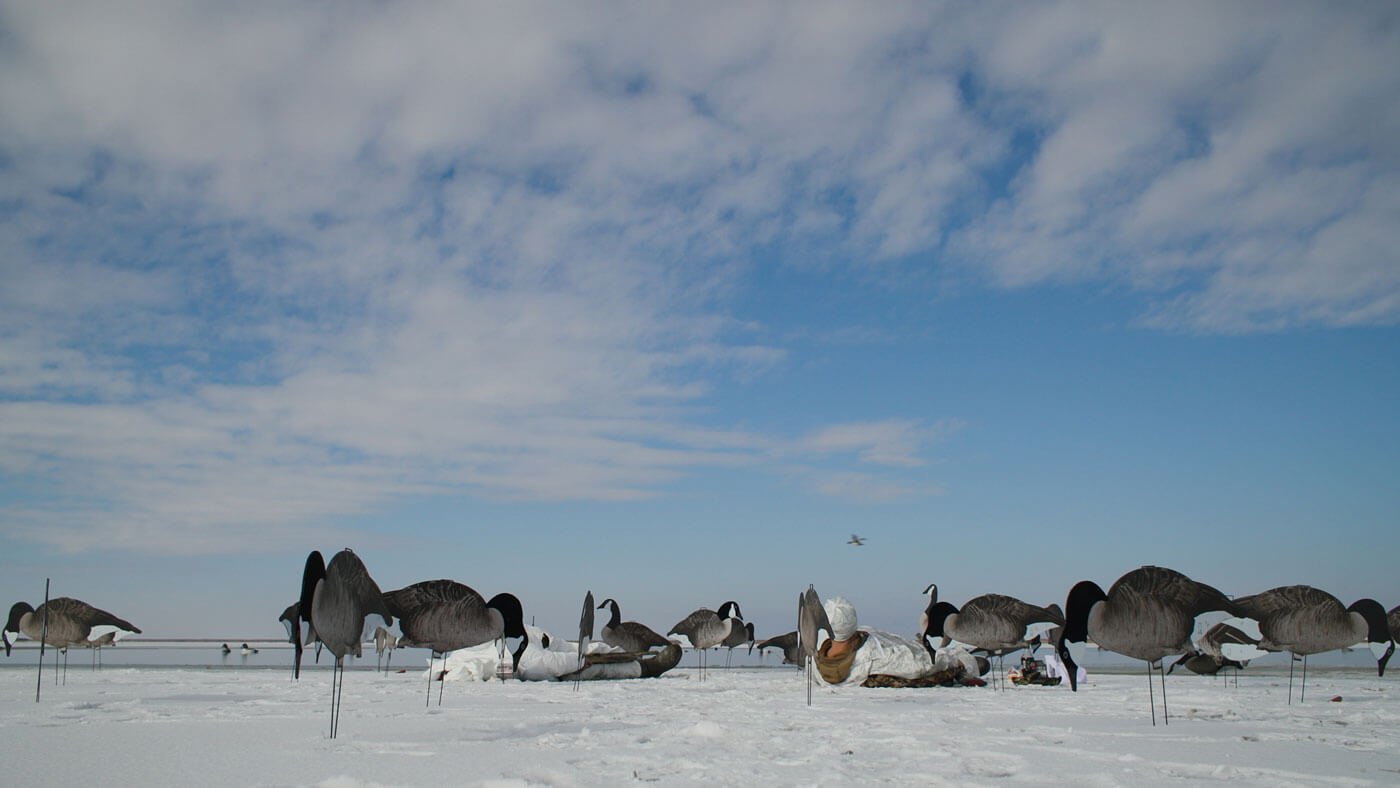
2. Adjust Your Decoy Spacing
A subtle but essential late season decoy adjustment is the spacing between each decoy. Ducks and geese that have encountered tight, uniform spreads all season will be on high alert for anything unnatural. Create wider gaps between decoys, which suggests a less organized, more relaxed group.
For example, spacing out goose decoys by 6-8 feet, rather than clustering them tightly, gives a more natural, “loose” look that birds tend to prefer late in the season. Ducks, too, prefer some space, especially near the outer edges of the spread, where they can see clear landing areas. With more spacing, you make the spread appear safer and more realistic.
3. Prioritize Realistic, High-Quality Decoys
Cheap decoys with faded colors or unrealistic postures won’t cut it when hunting pressured waterfowl. Late in the season, birds can spot inconsistencies more easily and are less likely to commit to low-quality decoys. Investing in high-quality, realistic decoys with fresh paint and natural-looking postures is one of the most impactful late season decoy adjustments you can make.
Look for decoys with lifelike feather detail, natural color tones, and subtle movement that mimics live birds. Adding a few “active” postures, like feeders and resters, can add realism and create a sense of security for incoming flocks.
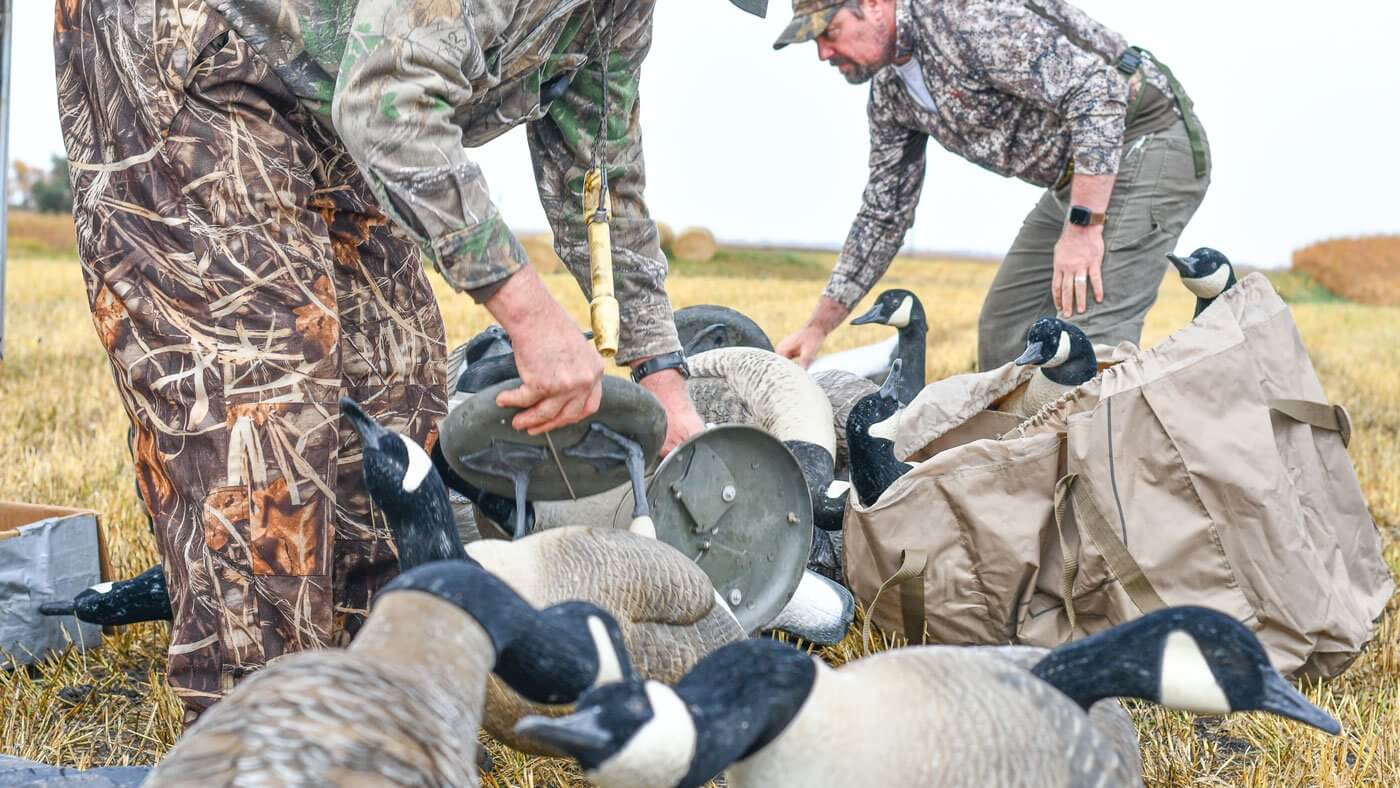
4. Switch to Motion Decoys Cautiously
Motion decoys like spinning-wing models can be highly effective during early season when ducks are less wary. However, pressured birds in late season are often cautious around overt movement, which can feel unnatural if overdone. Instead, subtle motion in the decoy spread is more likely to catch the interest of cautious ducks and geese without scaring them off.
Consider using jerk cords to create gentle ripples in the water around your decoys. This small amount of movement can look very natural, especially in calm conditions. Alternatively, a few “butt-up” feeder decoys can add lifelike motion without being too flashy.
Pro Tip: Limit the number of motion decoys or keep them at the edges of your spread to avoid spooking wary birds with sudden or unnatural movement.
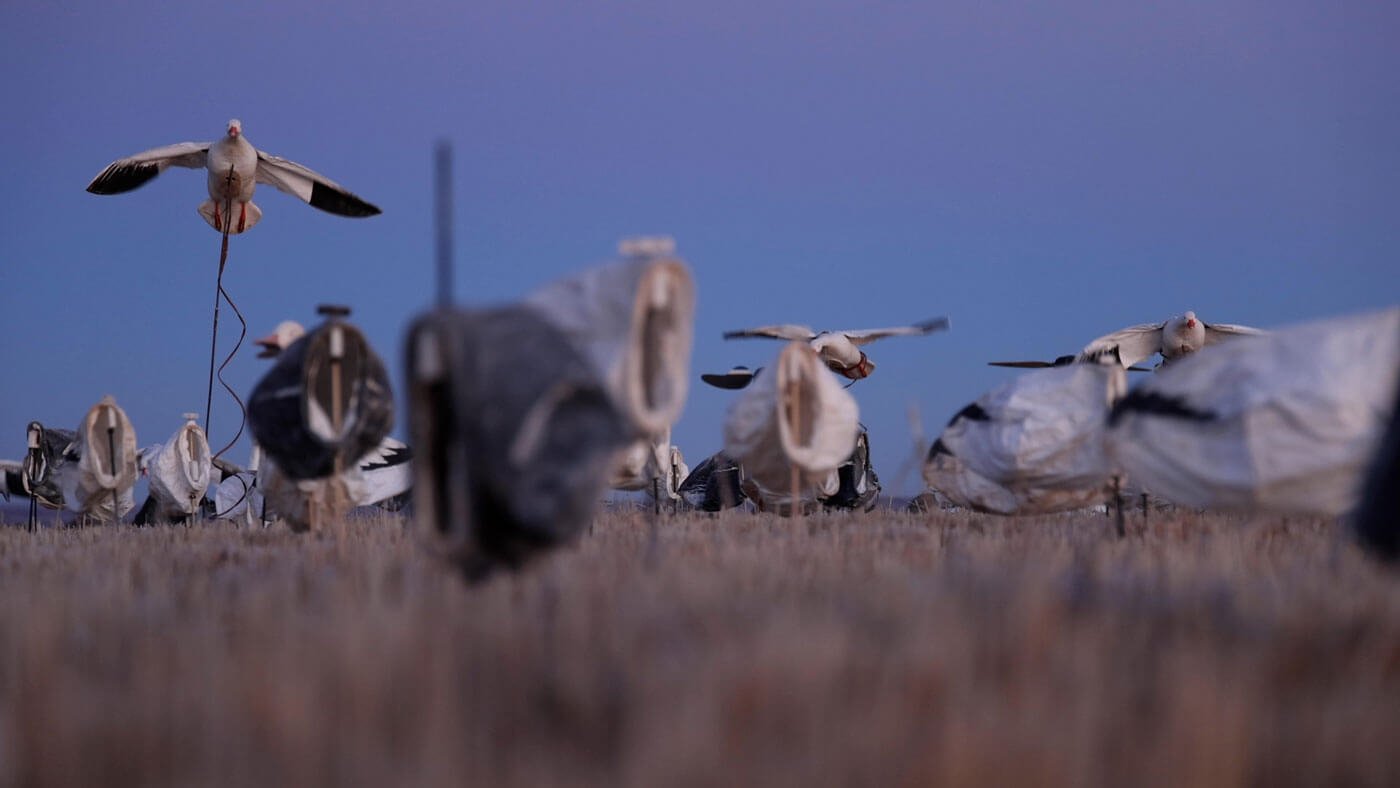
5. Use Mixed Species Decoys for Ducks
Another valuable late season decoy adjustment for duck hunters is to incorporate different species into your spread. Mixed species decoys can give the appearance of a popular feeding area with little competition, which can be inviting to pressured ducks.
Try adding some teal, or wigeon decoys to your mallard spread to diversify the look. This tactic works because it mimics a natural wetland, where multiple species often coexist peacefully. Additionally, late-season ducks are less likely to approach a large group of their own kind, especially if they’ve been hunted heavily. Mixing in other species can help them let their guard down.
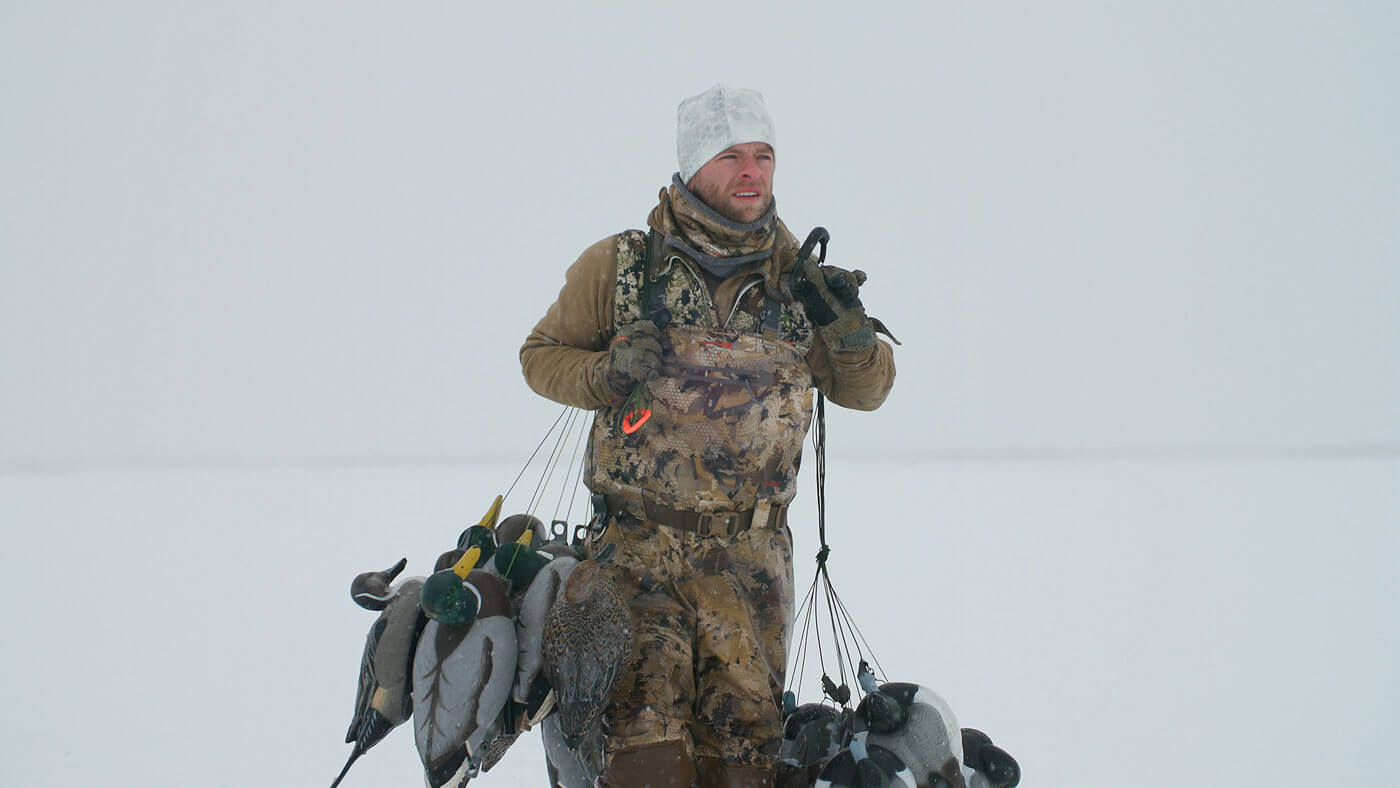
6. Change Your Decoy Shape
By late season, pressured birds have become adept at recognizing common decoy patterns, such as the “J-hook” or “U-shape.” Try breaking from these standard layouts and experimenting with a more irregular, loose pattern. For example, set up small, scattered groups that mimic birds resting in small clusters.
Avoid any pattern that looks too structured or unnatural. You might create several mini-groups around the blind to form a scattered pattern that has more open lanes for birds to land. This adjustment is especially effective for geese, who tend to be extremely cautious about tight, predictable layouts in the late season.
7. Fine-Tune Your Calling
Your calling technique becomes critical in late season hunts. Over-calling can spook wary birds, especially if they’ve heard it all before. Instead, tone down your calling and focus on subtle sounds like feeding chuckles or soft clucks. Calling less frequently but with more precision can convince pressured ducks and geese that the decoy spread is safe and undisturbed.
When the birds start circling, resist the urge to call too aggressively. Use just enough sound to keep their interest and focus on realism over volume. Late season decoy adjustments include knowing when to stay silent, allowing the spread and decoy positioning to do much of the work.

Final Thoughts
Late season waterfowl hunting requires a nuanced approach to decoy spreads and setups. By applying thoughtful late season decoy adjustments, like downsizing your spread, using lifelike decoys, adding subtle motion, and mixing species, you can create a setup that appeals to even the most cautious ducks and geese. Patience and attention to detail are key—small changes to your setup can yield big rewards with wary birds.
Embrace the challenge of late-season hunting and remember that these strategies are as much about respecting the instincts of the waterfowl as they are about improving your success. With these adjustments, you’ll be well-equipped to outsmart even the most pressured birds.
For more on waterfowl hunting, check out this collection of game changing tips and waterfowl hacks from our team of expert hunters.

